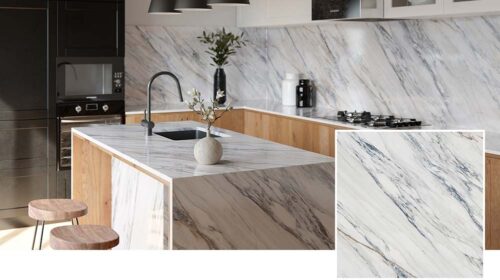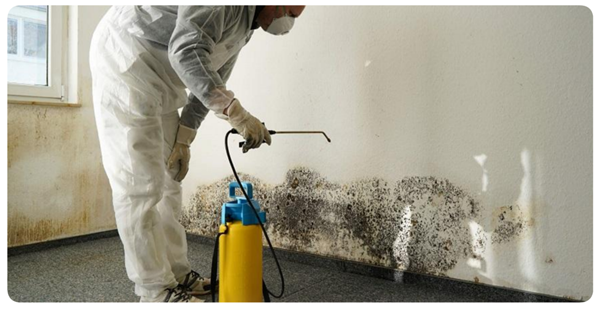What Things Should You Consider When Selecting Dektop Porcelain Countertops?
Porcelain countertops have gained popularity in recent years due to their durability, versatility, and aesthetic appeal. When it comes to remodeling a kitchen or bathroom, selecting the right countertop material is crucial as it impacts both the functionality and style of the space. Porcelain, with its numerous benefits, can be an excellent choice, but there are several factors to consider before making a decision. In this blog, we will delve into the key considerations for selecting Dektop Porcelain Countertops for your home.
Understanding the Basics of Porcelain Countertops
What Are Porcelain Countertops?
Porcelain countertops are made from a type of ceramic that is fired at extremely high temperatures. This process results in a dense and durable material that is resistant to scratches, heat, and stains.
Key Characteristics:
- Durability: Porcelain is known for its strength and resistance to wear and tear, making it suitable for high-traffic areas.
- Low Porosity: The material is non-porous, which means it doesn’t absorb liquids and resists staining better than many other countertop materials.
- Variety of Designs: Modern manufacturing techniques allow porcelain to mimic the look of natural stone, wood, or even concrete, providing a wide range of aesthetic options.
Advantages Over Other Materials
Porcelain countertops offer several advantages over other popular materials like granite, quartz, or laminate.
Benefits Include:
- Heat Resistance: Porcelain can withstand high temperatures without damage, making it ideal for kitchens.
- UV Resistance: It doesn’t fade under UV light, making it suitable for sunny areas or outdoor kitchens.
- Hygienic Surface: Its non-porous nature makes it resistant to bacteria growth, ensuring a clean cooking environment.
Key Considerations for Selection
Assessing Your Lifestyle and Usage
The first step in choosing porcelain countertops is to consider how your countertops will be used daily. This will help determine the type, color, and finish that best suit your needs.
Lifestyle Considerations:
- Heavy Usage: For kitchens with heavy usage, look for porcelain slabs with high durability and scratch resistance.
- Aesthetic Preferences: Consider what style complements your home’s décor. Porcelain comes in many finishes that can mimic other materials beautifully.
- Maintenance Willingness: If low maintenance is a priority, porcelain’s ease of care could be highly beneficial.
Size and Installation
The size and layout of your kitchen or bathroom will play a significant role in the selection of countertops. Installation considerations are crucial to ensure a seamless look and proper fit.
Installation Tips:
- Professional Measurement: Have professionals measure your space to ensure the slabs fit perfectly.
- Seam Considerations: Discuss with installers how to minimize seams and where they should be placed for aesthetic and functional integrity.
- Edge Options: Porcelain countertops can be finished with various edge styles. Choose one that complements your design and usage needs.
Budget Planning
While porcelain countertops can be cost-effective compared to some high-end materials, they are still an investment. Planning your budget accordingly can ensure you get the best value without compromising on quality.
Budgeting Tips:
- Compare Costs: Get quotes from several suppliers to find the best deal.
- Consider Longevity: Investing a bit more for a durable material like porcelain can save money in the long run on repairs or replacements.
- Installation Costs: Don’t forget to factor in the cost of professional installation, which is crucial for a job well done.
Design and Aesthetic Options
Color and Pattern Choices
One of the most appealing aspects of porcelain countertops is the vast array of colors and patterns available. Whether you want a sleek, modern look or something that mimics classic marble, porcelain offers it all.
Choosing the Right Color and Pattern:
- Complement Existing Décor: Ensure the countertops blend with your cabinetry, flooring, and wall colors.
- Consider Lighting: How natural and artificial light in your space affects the appearance of colors and patterns can influence your choice.
- Visual Texture: Some porcelain patterns add visual texture that enhances the depth and interest of your space.
Finish and Texture
The finish of your porcelain countertops can significantly affect both their appearance and practicality.
Types of Finishes:
- Polished: Offers a glossy, reflective surface that brightens up the space but may show fingerprints and smudges more readily.
- Matte: Provides a soft, non-reflective finish that is better at hiding smudges and scratches.
- Textured: Can mimic the feel of natural stone or wood, adding a unique tactile element to your kitchen or bathroom.
Maintenance and Care

Daily Care and Long-Term Maintenance
Maintaining porcelain countertops is relatively straightforward, which adds to their appeal. However, proper care is essential to preserve their beauty and functionality over time.
Maintenance Practices:
- Daily Cleaning: Use mild soap and water or a pH-neutral cleaner designed for porcelain. Avoid abrasive pads and harsh chemicals.
- Dealing with Spills: Clean up spills promptly to prevent any chance of discoloration, especially for highly pigmented substances.
- Periodic Checks: Regularly inspect for any chips or cracks, especially along edges and seams, to address any issues early.
Conclusion
Porcelain countertops are an excellent choice for homeowners looking for a blend of functionality, beauty, and durability. By considering how the countertops will be used, the style of your home, and your budget, you can select a porcelain countertop that not only meets but exceeds your expectations. Whether you’re renovating your kitchen or updating your bathroom, porcelain offers a sophisticated look with the practical benefits that make it suitable for almost any setting.
Note:- To read more articles visit on liveblogs.



